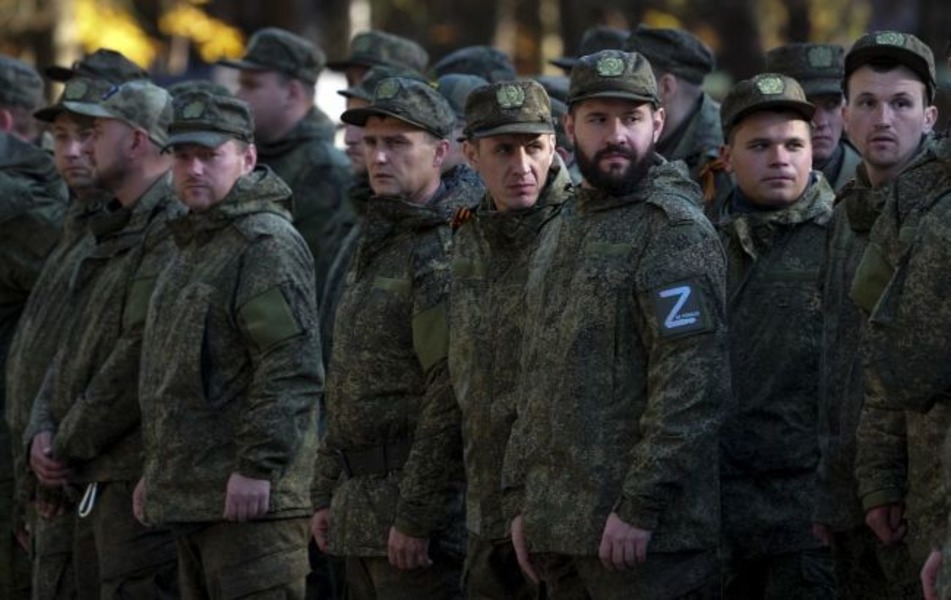A year ago, in September 2022, by Vladimir Putin’s decree, Russia initiated a partial mobilization, resulting in the conscription of hundreds of thousands of completely unprepared men into the army.
Their military training was sometimes as short as 2 weeks. The army’s leadership aimed to address the manpower shortage due to significant losses and quickly close the major failures on the front lines to achieve tactical success. However, things didn’t go as planned by the Russian Ministry of Defense. The outcome of the partial mobilization was the presence of a large amount of unprofessional and low-quality personnel in military units, which not only failed to solve the problems on the front but exacerbated them.
Many of those who were mobilized will never return home; a year of mobilization claimed the lives of thousands of Russian men. Investigators from the Conflict Intelligence Team (CIT) found that every fifth mobilized person who died didn’t even survive two months after receiving the draft notice, and the age range of those who died was from 19 to 62 years old. The past year since the start of the mobilization showed that little had changed for the mobilized individuals: they were used in the hottest areas of combat, and the problems with their treatment, lack of an organized battle system, and absence of artillery support persisted without resolution.
The human factor has become the catalyst for deteriorating processes in the Russian army. Currently, the Russian army, facing significant losses among junior officer ranks, is experiencing critical issues in organizing battles at the battalion, company, and platoon levels. This is due to the fact that 80% of battalion/company-level officers lack even theoretical knowledge, let alone real experience in organizing offensives. Once again, this is related to the absence of professional officer personnel at the lower to middle ranks. Essentially, the Russian army is now saturated with such an unprofessional component that it will be difficult to restore officer and quality resources in the troops in the coming years.
The catastrophic losses among the ranks have led Russian authorities and occupation administrations to enforce compulsory passportization and mobilization in the occupied territories of Ukraine. According to the Institute for the Study of War (ISW), starting from October 1, Ukrainians who received Russian Federation passports in the occupied territories are planned to be mobilized for the war. Additionally, it has been revealed that over 100 Cuban citizens were recruited into the Russian army during 2023. The Cuban Ministry of Foreign Affairs reported the discovery of a suspected Russian network recruiting citizens of their country for participation in the war against Ukraine. The CIT analytical group reported that the Russian Ministry of Defense widely uses «Storm Z» squads, which operate in the most difficult areas of the Ukrainian front, as penal battalions for errant soldiers. These squads can be compared to penal battalions from the time of World War II, formed after Stalin issued Order No. 227, better known as «Not One Step Back!» The order established not only penal battalions for disciplinarians but also blocking units within armies, tasked with shooting those who retreated. It is not surprising that as a result of battlefield failures, the Russian army has seen a significant increase in desertions and voluntary surrenders. Soldiers who surrendered explained their decision by citing poor material and technical support, as well as a low level of motivation.
Over the course of a year and a half of war in Ukraine, the Russian army lost thousands of pieces of military equipment. The most remarkable losses include infantry fighting vehicles and tanks, including the modern T-90 and T-90M tanks. During combat operations, Ukrainian forces effectively neutralized the Russian aviation, repelling the landing operation in Hostomel near Kyiv and destroying over a dozen helicopters at the airfield near Kherson, while effectively employing air defense systems. Without a fleet of their own, Ukraine managed to destroy eight and damage six ships of the Russian Navy. The flagship of the Black Sea Fleet, the cruiser «Moskva,» suffered the most. According to the Ministry of Defense of the United Kingdom, although the Black Sea Fleet sustained serious damage, it is still capable of carrying out its primary tasks, such as launching missile strikes and patrolling the area. However, its abilities to block Ukrainian ports and protect its own facilities have noticeably decreased.
The war in Ukraine has reached Russia as well. Drones and missiles are being shot down over Russian regions, even over the Kremlin. After the general mobilization, war will come to every Russian home. No one, whether officials or ordinary citizens, will be able to stay on the sidelines.

